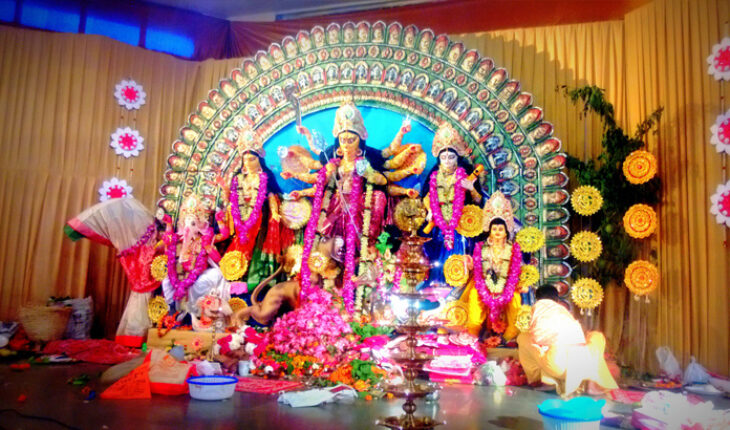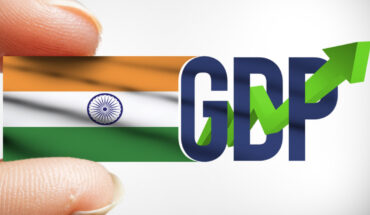Atanu Biswas predicts this year’s Durga Puja may be a dim affair due to drop in revenue
It is time for dew drops, soft essence of nyctanthes, and the usual holiday season in West Bengal. Most importantly, it is time for the annual extravaganza concerning Durga Puja – the greatest social and cultural feast of Bengal.
A few years ago, one of my Malaysian collaborators — a professor in Kuala Lumpur — visited Kolkata during the Puja days. Despite being accustomed to some of the greatest festivities on the globe like Christmas, Chinese New Year, Rio Carnival and Hanami, he found the splendour and magic of Durga Puja astonishing — he was amazed by the hundreds of colourful and thematic pandals (marquees) built temporarily in street-corners and parks, idols of the goddess Durga and her family members prepared in varied styles and depictions, streets flooded with light and the smell of street-food, a riot of colours, with millions of people out for pandal hopping, dressed in their finest clothes, with an average daily footfall of 2-3 lakh in any pandal.
Possibly, the only reasonable estimate of the Puja economy is available in a 2013 ASSOCHAM report, wherein the size of the economy was estimated at ₹25,000 crore, at an unbelievable 35% compound annual growth rate (CAGR). The situation might have changed in between, but at this CAGR, the projected size of the Durga Puja economy could be about 2 lakh crore in 2020 — around 13-14% of West Bengal’s GDP. This is in stark contrast to less than 2% contribution of the Rio Carnival to the GDP of Rio de Janeiro, 1.35% sharing of Oktoberfest to the GDP of Munich, slightly more than 1.5% contribution of Mardi Gras to New Orleans’s GDP, and Hanami generating around 2.25% of Japan’s GDP.
However, the economy of Durga Puja needs to be re-evaluated this year as a deadly pandemic has ravaged the world. As a direct impact of shrinking economy, millions of job losses and reduction in income, and amid the fear of contagion, the festivity and economy of the Puja are bound to be curtailed considerably. The Rio Carnival in February and Mardi Gras triggered contagion among the respective communities. And some Indian States saw a surge in COVID-19 cases after Ganesh Chaturthi and Onam. In fact, the Calcutta High Court has ordered that area within a radius of five metres for small pandals and 10 metres for big pandals in West Bengal will be out of bounds for visitors. No wonder, many of the big Pujas will be offering glimpses of prayers and festivity virtually — a remarkable change in the ever-changing history of Durga Puja of Bengal.
The ecosystem of community worship in Puja has changed with the economic liberalisation in India. Corporate funding and outdoor advertising, accounting for about 90% or more of the funding, and the traditional five-day festival extending to 10-12 days in the recent years, entail additional business scope, for sure. Also, with the expansion of online marketing, the purchasing pattern has changed remarkably for Puja shopping as well. Furthermore, unlike Oktoberfest or the Rio Carnival, which primarily depend on visitors, Puja economy in Bengal is mostly self-sustained. Puja shopping for apparel, shoes, electronic gadgets, spending over idols, pandals, and tourism, all contribute to the economy.
My ‘guesstimate’ is that usually community worship contributes about 15% to the economy, about 10% is spent in pandal hopping, inbound and outbound travel contribute about a quarter, and the remaining half of the Puja economy might be attributed to Puja marketing. The COVID-19 pandemic has jeopardised Puja-trips of Bengali people. Assuming that the expenditure on community worship would be reduced to half, and that on pandal hopping would become a quarter, and assuming almost no Puja-trips, about 80% of usual Puja marketing might make the Puja economy half of what it could normally be.
My ‘guesstimate’ might be way wrong, but there is no doubt that the Puja economy has been shattered by the pandemic.
Atanu Biswas is a professor of Statistics at the Indian Statistical Institute, Kolkata. Views expressed are his own
A few years ago, one of my Malaysian collaborators — a professor in Kuala Lumpur — visited Kolkata during the Puja days. Despite being accustomed to some of the greatest festivities on the globe like Christmas, Chinese New Year, Rio Carnival and Hanami, he found the splendour and magic of Durga Puja astonishing — he was amazed by the hundreds of colourful and thematic pandals (marquees) built temporarily in street-corners and parks, idols of the goddess Durga and her family members prepared in varied styles and depictions, streets flooded with light and the smell of street-food, a riot of colours, with millions of people out for pandal hopping, dressed in their finest clothes, with an average daily footfall of 2-3 lakh in any pandal.
Possibly, the only reasonable estimate of the Puja economy is available in a 2013 ASSOCHAM report, wherein the size of the economy was estimated at ₹25,000 crore, at an unbelievable 35% compound annual growth rate (CAGR). The situation might have changed in between, but at this CAGR, the projected size of the Durga Puja economy could be about 2 lakh crore in 2020 — around 13-14% of West Bengal’s GDP. This is in stark contrast to less than 2% contribution of the Rio Carnival to the GDP of Rio de Janeiro, 1.35% sharing of Oktoberfest to the GDP of Munich, slightly more than 1.5% contribution of Mardi Gras to New Orleans’s GDP, and Hanami generating around 2.25% of Japan’s GDP.
However, the economy of Durga Puja needs to be re-evaluated this year as a deadly pandemic has ravaged the world. As a direct impact of shrinking economy, millions of job losses and reduction in income, and amid the fear of contagion, the festivity and economy of the Puja are bound to be curtailed considerably. The Rio Carnival in February and Mardi Gras triggered contagion among the respective communities. And some Indian States saw a surge in COVID-19 cases after Ganesh Chaturthi and Onam. In fact, the Calcutta High Court has ordered that area within a radius of five metres for small pandals and 10 metres for big pandals in West Bengal will be out of bounds for visitors. No wonder, many of the big Pujas will be offering glimpses of prayers and festivity virtually — a remarkable change in the ever-changing history of Durga Puja of Bengal.
The ecosystem of community worship in Puja has changed with the economic liberalisation in India. Corporate funding and outdoor advertising, accounting for about 90% or more of the funding, and the traditional five-day festival extending to 10-12 days in the recent years, entail additional business scope, for sure. Also, with the expansion of online marketing, the purchasing pattern has changed remarkably for Puja shopping as well. Furthermore, unlike Oktoberfest or the Rio Carnival, which primarily depend on visitors, Puja economy in Bengal is mostly self-sustained. Puja shopping for apparel, shoes, electronic gadgets, spending over idols, pandals, and tourism, all contribute to the economy.
My ‘guesstimate’ is that usually community worship contributes about 15% to the economy, about 10% is spent in pandal hopping, inbound and outbound travel contribute about a quarter, and the remaining half of the Puja economy might be attributed to Puja marketing. The COVID-19 pandemic has jeopardised Puja-trips of Bengali people. Assuming that the expenditure on community worship would be reduced to half, and that on pandal hopping would become a quarter, and assuming almost no Puja-trips, about 80% of usual Puja marketing might make the Puja economy half of what it could normally be.
My ‘guesstimate’ might be way wrong, but there is no doubt that the Puja economy has been shattered by the pandemic.
Atanu Biswas is a professor of Statistics at the Indian Statistical Institute, Kolkata. Views expressed are his own






